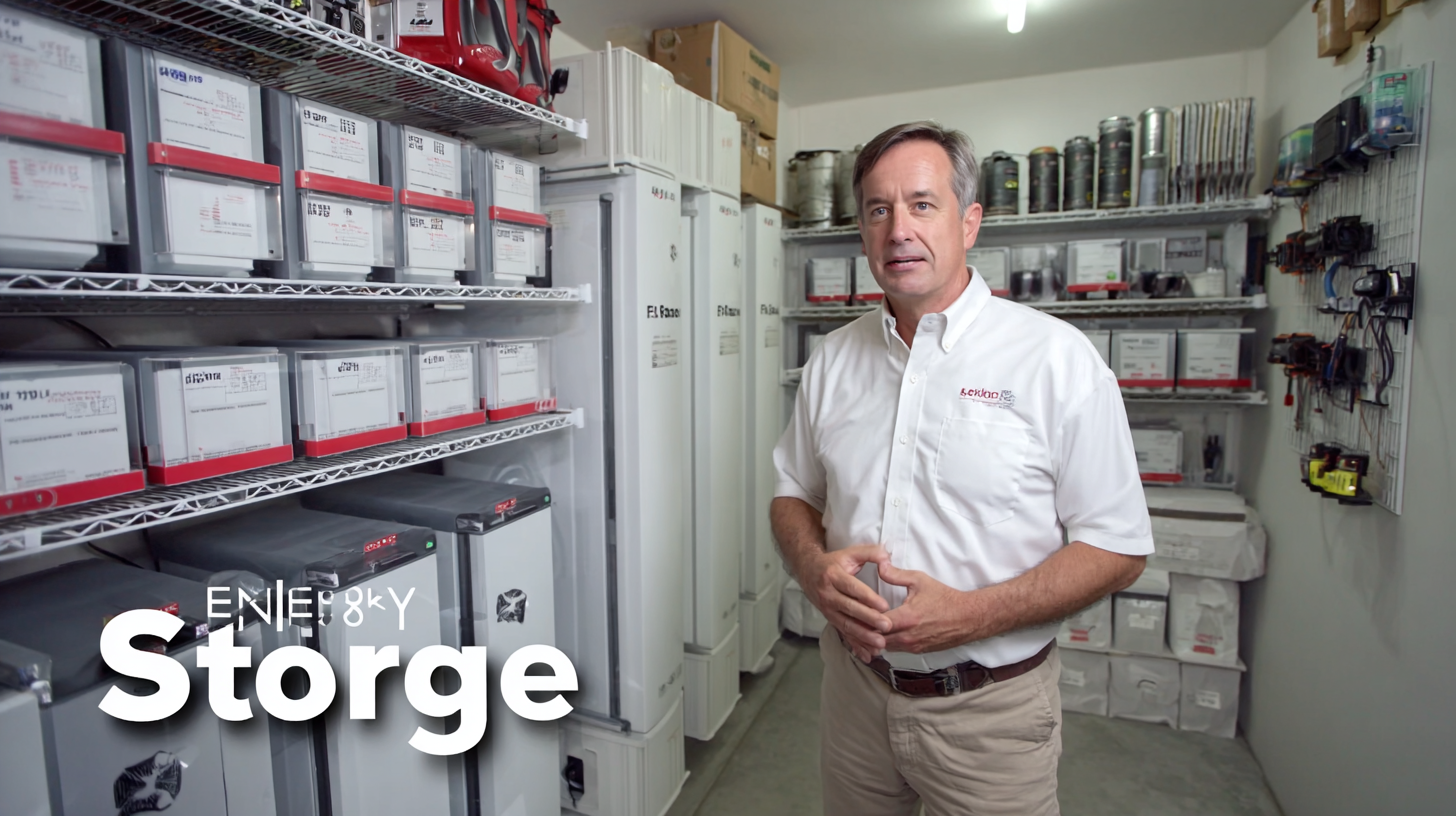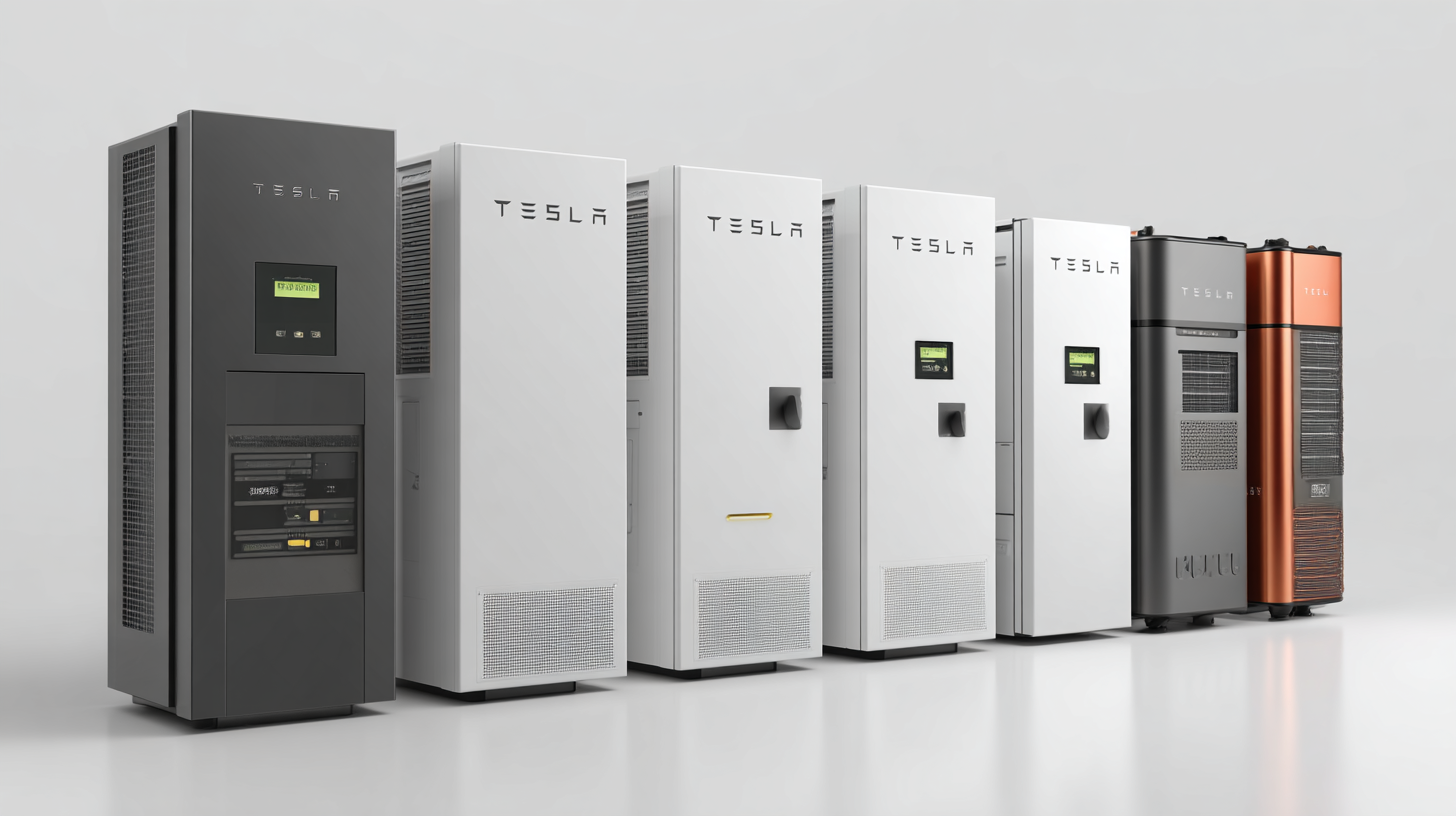In today's rapidly evolving energy landscape, businesses are increasingly turning to renewable sources to power their operations, with solar energy becoming a leading choice. However, harnessing solar energy is only part of the equation; the real challenge lies in effectively storing this energy for when it is needed most. This is where Solar Energy Battery Storage comes into play. Selecting the right battery storage solution can significantly impact your business's energy efficiency, cost savings, and sustainability goals. With a multitude of options available, understanding the unique needs of your business and the capabilities of different battery technologies is crucial. This guide will delve into the key factors to consider when choosing the best Solar Energy Battery Storage system for your business, ensuring you maximize the benefits of your solar investment while meeting your energy demands.

As businesses increasingly turn to renewable energy, the importance of solar energy battery storage has become paramount. A recent report from the International Renewable Energy Agency (IRENA) highlights that energy storage solutions are projected to grow significantly, with global installations expected to reach 1,000 GWh by 2030. This growth reflects the necessity for businesses to manage their energy consumption effectively, especially during peak hours when energy costs can surge. By investing in solar battery storage, companies can not only reduce their reliance on the grid but also stabilize their energy costs.
Moreover, according to a study by BloombergNEF, the cost of lithium-ion batteries has dropped by 89% since 2010, making them a more feasible option for businesses looking to enhance their energy independence. Battery storage systems allow businesses to store excess solar energy generated during the day for use during nighttime or periods of high demand. This capability not only ensures uninterrupted operations but also contributes to a significant reduction in carbon footprints. As corporations strive for sustainability, effective solar energy battery storage solutions provide a viable pathway to achieving energy resilience and operational efficiency.
This chart compares different types of solar energy battery storage based on their capacity in kilowatt-hours (kWh). Lithium-ion batteries are the most commonly used for commercial purposes due to their high capacity, while lead acid and other types follow in terms of capacity and use cases.
When selecting solar energy battery storage for a business, it's crucial to understand the various types of battery technologies available and their distinct advantages. The three predominant technologies are lithium-ion, lead-acid, and flow batteries, each suited for different applications and operational scales.
 Lithium-ion batteries are particularly favored in the commercial sector due to their high energy density and efficiency. According to the U.S. Department of Energy, they have a round-trip efficiency of up to 95%, which allows businesses to maximize energy savings. Additionally, their longer lifespan—averaging 10 to 15 years—greatly reduces the total cost of ownership over time.
Lithium-ion batteries are particularly favored in the commercial sector due to their high energy density and efficiency. According to the U.S. Department of Energy, they have a round-trip efficiency of up to 95%, which allows businesses to maximize energy savings. Additionally, their longer lifespan—averaging 10 to 15 years—greatly reduces the total cost of ownership over time.
On the other hand, lead-acid batteries, while generally more affordable upfront, offer a lower energy density and a shorter lifespan, typically ranging from 3 to 7 years. However, they are often used in smaller applications due to their established technology and reliability. Flow batteries present another alternative, noted for their scalability and safety, making them suitable for larger energy storage needs. Industry analyses project that the flow battery market could reach $1.3 billion by 2027 as businesses seek long-duration energy storage solutions. Understanding these technologies will empower businesses to make informed choices that align with their operational needs and sustainability goals.
When selecting a solar battery storage solution for your business, it's essential to consider several key features that can significantly impact performance and cost-effectiveness. According to a report by BloombergNEF, the demand for energy storage systems is expected to quadruple by 2030, making it crucial for businesses to invest wisely. One of the top considerations is the battery capacity, which determines how much energy can be stored and used during peak times. A higher capacity allows for greater energy independence, helping to reduce electricity costs.
Another factor is the depth of discharge (DoD), which indicates how much of the battery's capacity can be used without compromising its lifespan. Most lithium-ion batteries offer a DoD of around 80-90%, meaning businesses can utilize most of their stored energy. Additionally, look into the battery cycle life. Reports from the National Renewable Energy Laboratory suggest that some quality solar batteries can last more than 10 years, offering a favorable return on investment.
**Tip:** Before making a purchase, assess your energy consumption patterns to determine the appropriate battery size. It’s also wise to consider warranties and certifications to ensure long-term reliability.
**Tip:** Take advantage of financial incentives and rebates, as many governments are pushing for the adoption of renewable energy and may offer significant savings on battery systems. Research local programs that can reduce upfront costs.
Investing in solar energy battery storage offers significant financial benefits for businesses seeking to enhance their sustainability and reduce operating costs. According to the U.S. Department of Energy, commercial properties equipped with solar battery storage can save an average of 20% on energy bills. This is achieved by utilizing stored energy during peak pricing hours, effectively lowering demand charges that can inflate electricity costs. As electricity rates continue to rise, the return on investment (ROI) from such installations can be realized in just a few years.

Additionally, businesses that implement solar battery storage can take advantage of various incentives and tax credits. The Federal Investment Tax Credit (ITC) allows for a reduction of up to 30% in installation costs of solar systems, including batteries. A report from Bloomberg New Energy Finance highlights that businesses can expect the cumulative savings from these incentives alongside energy bill reductions to exceed $10,000 annually for medium to large enterprises. Not only does this enhance cash flow, but it also positions businesses favorably within their industries as leaders in renewable energy adoption.
When it comes to maintaining and optimizing your solar battery storage system, several key factors contribute to maximizing its longevity and performance.
First, it's essential to regularly monitor the battery's state of charge (SoC) and depth of discharge (DoD). Keeping the charge levels within recommended limits ensures that the batteries do not undergo excessive cycles, which can lead to premature wear. Additionally, periodic maintenance checks, such as inspecting connections and cleaning terminals, can prevent performance degradation caused by accumulated dust or corrosion.
Environmental factors also play a significant role in the longevity of your solar batteries. It's vital to install the battery system in a climate-controlled environment to avoid extreme temperatures, which can adversely affect battery chemistry. For lithium-ion batteries, a temperature range of 20-25°C is ideal. Furthermore, implementing a robust monitoring system can help you track performance metrics and diagnose issues before they escalate. By prioritizing proper maintenance and environmental conditions, you can enhance the lifespan and efficiency of your solar energy storage solution, ensuring it serves your business needs effectively for years to come.